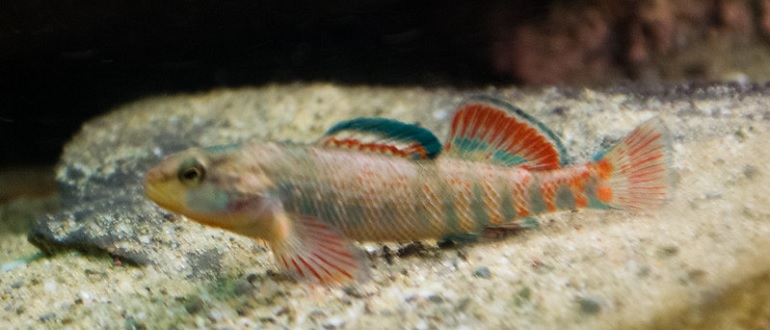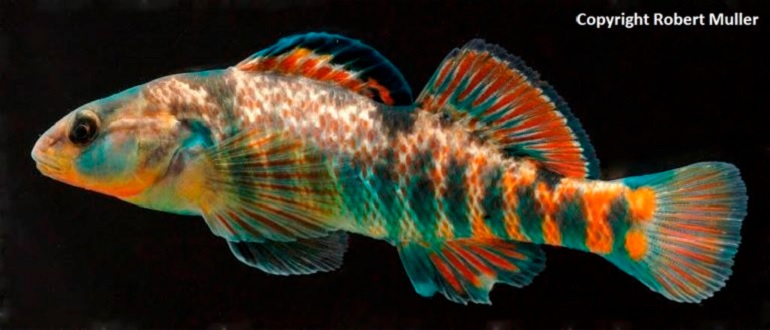Can you find a rainbow in the river?
GET TO KNOW rainbow darters
If you see a small, bright flash of silver, orange and blue in the river, it might be a rainbow – a rainbow darter that is.
FUN FACT: Rainbow darters are shy fish that hide from danger. When injured, they emit warning chemical pheromones into the water to warn other rainbow darters of the danger.
PHYSICAL CHARACTERISTICS
Rainbow darters are small, only 2” – 3” inches long. Male rainbow darters exhibit bright blue and orange stripes on their bodies and fins (as shown in the picture above), while females have muted bronze and greenish stripes. Males are colorful year-round, but their stripes are brightest during mating season.
Although rainbow darters are known for “darting” rapidly along the stream bottom, these little fish do not actually swim very well because they do not have gas bladders. Many types of fish have gas bladders within their abdomens that help them maintain buoyancy and swim smoothly. Without a gas bladder, rainbow darters exhibit a characteristic swim pattern of shooting forward a short distance, then sinking to the bottom and resting before shooting forward again.

HABITAT & LIFE CYCLE
Rainbow darters belong to the Etheostoma genus of fish that are commonly known as darters. There are over 150 distinct species of these small fish that are native to freshwater streams of eastern North America. Many darters are very limited to one specific stream or small area, and some are very endangered.
The rainbow darter is both the most colorful and one of the most common darter species. These little fish can be found in shallow, fast flowing sections (riffles) of freshwater streams and rivers. They require cool, clean water to survive, so their presence is a good indicator of stream health.
While they prefer to spend much of their time hiding near rocks in a fast flowing stream, rainbow darters travel to quiet ponds to find food (insects) and to spawn. Breeding season is early spring when water temperatures are between 59 – 65 degrees Fahrenheit. It is generally believed that female rainbow darters select the largest and most colorful male for a spawning partner. Once the female chooses, she partially buries herself in the stream bed while the male hovers directly above her. Dozens of eggs are released into the water and must be quickly fertilized as they fall to the stream bottom. This process may be repeated numerous times over a few days until the female has released around 800 eggs.
Fertilized eggs hatch in 7-10 days, and young rainbow darters will not spawn until their second year. Although many darters are eaten by larger fish, rainbow darters have a potential lifespan of four years. During this time, they contribute to the richness, health and beauty of the watershed.
TAKE ACTION
Rainbow darters are very sensitive to pollution and cloudy water and are important indicators of watershed health. You can help maintain water quality for rainbow darters by reducing toxic run-off that flows into storm drains. See more information at https://therouge.org/rainsmart/ to help make your yard river friendly today!
Friends of the Rouge community science volunteers include rainbow darters in the annual fish survey (August – October) as part of an ongoing effort to monitor the health of the river. You can sign up for a Fish Survey (https://therouge.org/fish-monitoring/) and see these little gems yourself.
